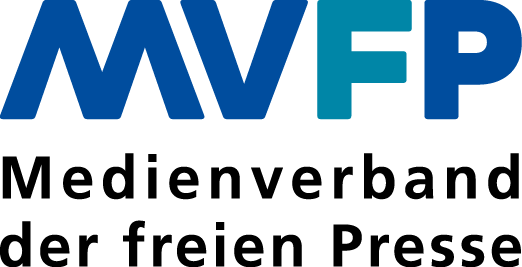Pangaea Alliance, ad trends and more - Rubicon Project’s Jay Stevens shares his thoughts
One of the key changes in advertising in recent years has been the rise of programmatic buying. In many ways it has transformed the way that agencies and media companies view online display advertising.
Yet where is programmatic likely to head in the future? Video? Native? Here Jay Stevens, GM International of ad tech company Rubicon Project, speaks (via email) to DIS contributor Ashley Norris, offering his predictions, alongside an explanation of the Pangaea Alliance, which Rubicon have played a key role in developing.
Don’t miss Jay at the Digital Innovators’ Summit (DIS) in Berlin, Germany from 20-22 March 2016. The discounted, pre-agenda booking option (with savings of at least €800 on final delegate rates) ends soon, so book today.
What brought about the Pangaea Alliance? Who drove it? Do you think that the five brands are planning on expanding it to include other publishers?
The Pangaea Alliance represents the coming together of a range of the top global news publishers, many of whom we previously already worked with on an individual basis and continue to do so.
The Pangaea Alliance, which includes the Guardian, CNN, the FT, Reuters and the Economist, is currently one of nine such co-operatives around the world on our platform, but while unique in its global focus, its motivation and approach remain similar to its peers.
Through pooling inventory and data, co-operatives aim to enable publishers to compete more effectively with the giants of search and social that tend to dominate the media industry worldwide.
And it’s not all hype and hyperbole. Earlier this year at Dmexco we released a dedicated report and infographic on the subject with specific proof points on the successes enjoyed by several of our co-op partners thus far.
As the report also shows, La Place Media in France has more than doubled in terms of member publishers since launch, from 120 to 250. In terms of your second question, there is no doubt that the members of the Pangaea Alliance are highly ambitious, and it would be no surprise if they had similarly lofty aims.
How many other similar co-operatives do you have on the go at the moment? Do they all work in a similar way? If not what is different?
As mentioned, we currently have eight other national co-operatives live on the platform. The most interesting recent development in this area is that it has become truly a global phenomenon with the launch of the first co-ops outside of Europe, RPA Media Place in Argentina and the Kiwi Premium Advertising Exchange (KPEX) in New Zealand going live over the past couple of months.
In terms of how they successfully operate, the blueprint was really set by the first co-operative, La Place Media when they launched three years ago.
How important do you think programmatic platforms are going to become in terms of the sale of video inventory?
In the past, video was largely seen by the industry as an area of programmatic that was low on quality, given the major broadcasters unwillingness to open up to automation, however, there are some signs this is now changing.
This year, with innovative players such as Channel 4 now embracing programmatic video wholeheartedly, plus the overall consumer shift from analogue TV to digital/IPTV/Tivo/Roku/Apple TV/etc in full swing - all digital, addressable channels (including cross-screen innovations such as Sky’s AdVance product), will be another fascinating space to watch in 2016.
How much has the growth of native been a challenge for the programmatic ad industry? Not at all?
The growth of native advertising has been one of the most exciting and fast growing areas we’ve seen across the industry over the past couple of years. And it’s still gaining momentum. According to one source (SocIntel, as cited by eMarketer) native ad spend in the US will reach more than $4bn this year, while a number of publishers cite this area as already making a significant contribution to their bottom line.
In terms of its impact specifically on our sector, I have long argued that native and automated (aka programmatic) advertising are complementary, not competing phenomena.
The challenge for many publishers in this area, if you’re not Buzzfeed of course, is one of scale. We’re essentially back to the old world of trading display manually, before the advent of ad technology, with the added problem that your native/content marketing offering is in competition not just with other sellers, but with agencies and content marketing businesses pitching for the same business.
Do you think that native advertising can ever be sold widely and effectively programmatically. If so how?
As it happens, it already is. And I firmly believe native is part of the solution to issues around ads that do not fit seamlessly into the user experience.
One of the most interesting developments we’ve seen in our area in 2015 has been the evolution of the open real-time bidding protocol (the agreed standards that our industry functions on, similar to HTML for advertising) to include native ad placements for the first time.
Our CTO, Neal Richter, was personally heavily involved in developing this latest iteration, and though it’s still at an early stage, our mobile partners, such as InMobi, are already making great strides in this area and say native is driving 5 times the engagement of traditional banners.
With more buyer interest and buyer-side technology (the so-called ‘DSPs’ or demand side platforms) plugging into programmatic native over the coming three months, many expect this to be an area that edges into the mainstream next year.
What is the one piece of advice you would give to publishers looking to increase their ad revenue?
Be sure that any partner you work with is honest, consultative and transparent and has a product roadmap and company culture in line with your own.
Jay will be one of the speakers at the Digital Innovators’ Summit (DIS) in Berlin, Germany from 20-22 March 2016. Our discounted, pre-agenda booking option (with savings of at least €800 on final delegate rates) ends soon, so book today.





